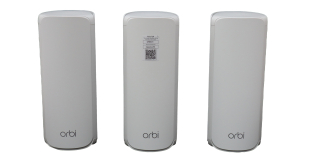During short range testing, we observed three competing wireless signals on the 2.4GHz frequency, and two on the 5GHz frequency.
During long range testing, we observed three competing wireless signals on the 2.4GHz frequency, and two on the 5GHz frequency.
Tenda's N60 delivers solid performance on both frequency bands during short range testing. Despite an additional interference-causing signal, the 2.4GHz frequency band offered the best overall transfer rates.
The Tenda N60 router continues to deliver strong performance on the 2.4GHz frequency band, despite the disturbance-ridden 40 foot signal path. Even when our client computer was positioned 40 feet away from the N60 router, the transfer speeds were still adequate enough to deliver effective playback of a high bit-rate Bluray rip.
Performance on the 5GHz frequency band plummets with distance and material interferences. It is clear that the 5GHz signal is attenuating heavily as it struggles to penetrate the building's thick internal structures over extended ranges. This is likely related to the shorter wavelength, in comparison to the 2.4GHz signal.
At the 5GHz transfer rates that we recorded, a stream of high-definition content would get choppy at certain points and file sharing would be a time consuming process.
 KitGuru KitGuru.net – Tech News | Hardware News | Hardware Reviews | IOS | Mobile | Gaming | Graphics Cards
KitGuru KitGuru.net – Tech News | Hardware News | Hardware Reviews | IOS | Mobile | Gaming | Graphics Cards







Good performance, but i have got to say, that is very ugly in regards to design, something nice and black and sleek would look a lot better.
Its good for the price, cant be bad to that. under £40 is excellent.
Tell me, please, where you can download the latest official firmware for Tenda N6 (N600)?